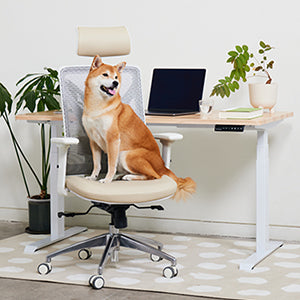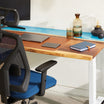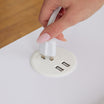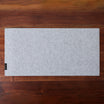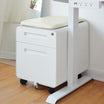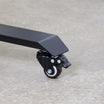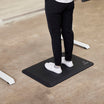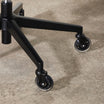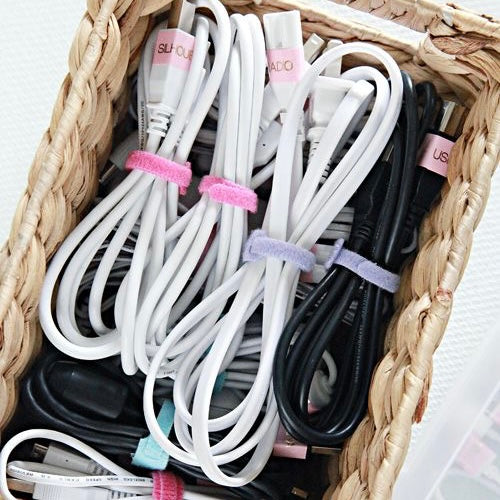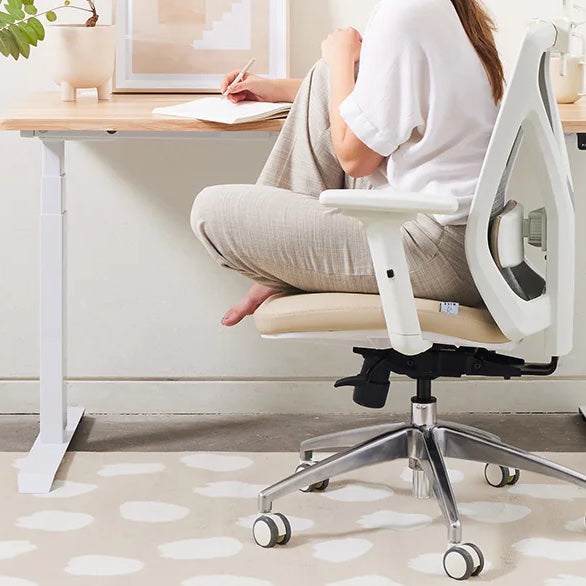We know your secret. We keep the same one. Beneath even the shiniest new tech setup, is something you're not as willing to display – your unsightly cables, tangled together. The average workstation has 2.3 devices, with 14 percent of employees using six or more work-related devices each day. This makes for a lot of cables, and they get tangled pretty quickly, making your workspace extremely cluttered below the surface.
Cable management may seem complicated at first, but with a few simple steps and some patience, you can keep everything organized. While some people may not realize it, there are actually quite a few ways to better organize your cables. The best method depends on what kind of device you're working with, what type of cables you're using, and whether or not you have any extra space available. Below we've listed the five best methods for organizing cables:
1. Get Rid of Unnecessary Cables
The first step towards better cable management is getting rid of all those unnecessary cables. This includes anything from power cords to USB ports or HDMI ports. The reason why this is important is because space is your most important resource in organization, and extra cables take up space that you could be using for organizing the essentials. If you have a lot of cables running around your desk, it will make it hard to find what you need when you need it, so remove all of those cables you don't actually need.
If you want to cut out wires, the best way to do so is to eliminate them wherever possible. A great way to reduce your total number of cables is to go wireless where you can. For example, if you have an external monitor, you can simply connect it wirelessly through your laptop's built-in Wi-Fi. You can also use Bluetooth devices like speakers to eliminate any wires. Most wireless keyboards and mice are fast enough so that they feel like you're using a wire now, so its not too much of a difference.

2. Swap Long Cords With Shorter Alternatives
Cable length can be the exact problem that is making your setup so messy. Whenever you have long cables, they tend to get tangled up and become difficult to manage. However, there are ways to avoid this issue by swapping out longer cables with shorter alternatives. For the devices that you keep relatively in place, there are often cords that are significantly longer than the reach you need, so in this case you can switch them out, where applicable, for shorter ones that are just the right length from your power source to your stationary device.
For other devices, such as monitors, laptops, and phones, you'll want to look into buying a dongle instead of having a cord that is too long. These little adapters allow you to plug in your phone or computer without needing to worry about how far away it is from your screen. They usually come with their own power supply, which means that you won't have to worry about finding a separate outlet for your device, either.

3. Coil What Can’t Be Swapped
If you have a device that has no alternative option for a cable, then you might be stuck with a long one. There are many cases where you cannot swap out a cable, especially if it's a device that requires specific connections. In these instances, you'll need to coil the excess cable so that it doesn't interfere with your work. Coiling is easy to do, and it takes very little time. Simply wrap the excess cable around itself until it becomes small enough to fit inside the device. You can also use cable ties to secure the coils together once you've wrapped them around each other.

4. Secure Your Power Strips
A stationary power source can work wonders towards getting an organized cable setup. Power strips are typically designed to hold multiple plug types at once, and securing them to your wall or desk is a great way to avoid having your cables fall in a hanging messy contraption, or on the floor. Double-sided tape is perfect for this purpose, as it allows you to attach the power strip securely while still leaving room for cables. It's also easier to clean up after you've removed the strips when you don't have to worry about removing adhesive residue. Velcro is also another good choice, since you will be able to remove and reattach it at your convenience without worrying about it losing its stick.

5. Keep Your Runs Clear
When it comes to organizing your cables, there are two main things that you should consider: placement and accessibility. When it comes to placement, you'll want to think about whether you'd like to place your cables vertically or horizontally. Vertical placement is more common because it keeps everything neat and tidy, but horizontal placement gives you more space to work with. Accessibility is important, too, because you'll want to ensure that your cables aren't blocking any of your workspace. For example, if you have a laptop, you'll want to make sure that your mouse cable isn't getting in the way of typing.
Chances are that you'll probably have several different cords running along the same path. This is fine when they all lead to the same destination, but it gets problematic when they run in parallel but cross over each other, making it impossible to access one without removing countless others. Tangled runs are the very thing standing between you, and perfect cable organization.
To keep your runs clear, first find out where your cords are coming from, and where they lead to. Then, go through every single cord and make sure that they aren't crossing over each other. You can then start grouping your cords together based on similar paths, making sure that each individual cord is still free to be accessed. If you're using a power strip, you should consider placing it near the point of origin so that you can easily access all of your cords.


